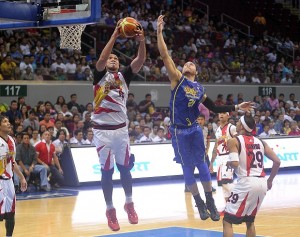It isn’t much fun when it happens after games but you should take a closer look at how coaches deal with the referees during a basketball game.
Within boundaries limits of a league and the commissioner’s parameters, team officials and coaches can comment about officiating but the real ability of the teams to get some breaks from the referees happens when the game is on.
They call it “working the refs” and there’s really nothing wrong with because it’s all part of the kinetic energy of a passionate basketball game. The coaches are participants in the event and will try everything from an icy stare to a vicious comment to get any kind of edge.
Not every ploy works because the refs do prepare for them just as assiduously as the coaches. And besides, they do get used to the antics after a while.
There are basically three kinds of sideline patrollers and you see them in any league around the world:
THE GAME WHISPERER. The style of this coach is to stand with his arms folded or behind his back, looking almost dispassionately at the game. He doesn’t rant or scream he feels that shouting his head off is bad for the temperament of the team.
To seek clarification, he summons the referees with a wave of a finger and then whispers his question or clarification. Or he’ll wait for the ref to be close to him on the next inbound play to make his move.
His belief is that if you ask nicely maybe you’ll get a break next time. He will not comment on the officiating in the media because he knows the refs watch the post-game interviews and read the news.
THE COMPLAINER. We all know this one: Screaming, yelling, frowning and shouting almost all game long to get any kind of break from the zebras (once the name of the referees when they still wore striped black and white uniforms). The refs know him and know how to choreograph their floor runs to avoid and accommodate him.
It’s interesting how the new bench decorum rules have prevented the entire army of assistant coaches from rising up in arms when a perceived missed or bad call occurs. If not for those interventions, the complainer would have a backup line that actually looked like a chorus.
There are complainers who count the number of free throws awarded the other team as a supposed reflection of one-sided whistle blowing. This is never really accurate but it seems like a glaring stat to point out in the post-game press conference.
- STARE. Greg Popovich of the San Antonio Spurs is my all-time favorite stare guy because both his players and the refs feel his dagger look when they muff a play. Popovich can engage in arguments but it’s his stare that TV cameras love to closeup on when the Spurs bungle their usually flawless offense or the refs fail to call a foul on Tim Duncan’s rare forced shots from the post.
One coach asked me how the scribes and broadcasters could see what they do along the sideline with the game going on. Aside from the 13 players and refs running on the court, there are only two other people usually standing in a game: The two coaches working the refs.


